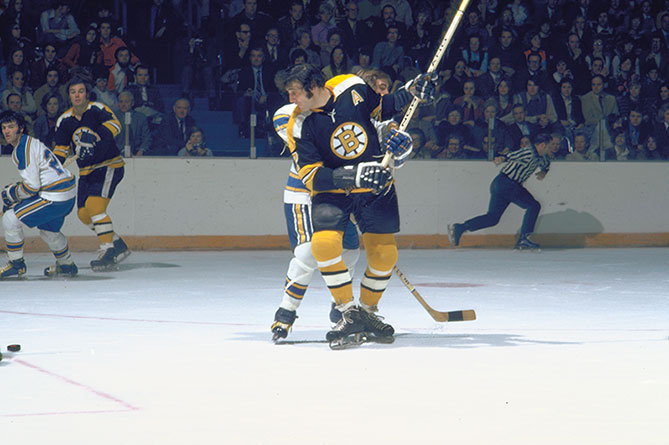 Growing up in Canada, you were likely a hockey fan; no different than how baseball is the so-called American pastime, in the Canada where and when I grew up it was hockey. Living near Toronto, the odds were pretty good that you’d be a Toronto Maple Leafs fan. And back then, there weren’t too many teams in the league, so you probably felt a rivalry with pretty much everyone, since you were able to tell stories about pivotal wins and loses to each.
Growing up in Canada, you were likely a hockey fan; no different than how baseball is the so-called American pastime, in the Canada where and when I grew up it was hockey. Living near Toronto, the odds were pretty good that you’d be a Toronto Maple Leafs fan. And back then, there weren’t too many teams in the league, so you probably felt a rivalry with pretty much everyone, since you were able to tell stories about pivotal wins and loses to each.
And it was in that context that I disliked Phil Esposito.
Although he started his professional career in Chicago, it was his time in Boston, playing for the Bruins, that I recall best. And yeah, that’s him up there. They won a lot of championships back then, something my Leafs did in 1967, never to be repeated (at least not yet). So there was a good chance that when the Bruins came to Maple Leaf Gardens, Esposito, their big, star center, would sooner or later be perched in front of the Toronto net and would knock in a rebound, scoring yet another goal in his record-setting career.
He was lucky.
They even had bumper stickers in Boston, back then, that read
Jesus Saves, Espo Scores on the Rebound
Sloppy goals, they were. That big lumbering guy perched in front of the net, getting easy rebounds. No wonder he scored so many goals.

Like I said, I wasn’t a fan.
At least that’s how I thought about him back then — until, that is, one night when, during the break between periods, when the TV announcers make small talk and scrutinize the highlights from the game so far, they showed several minutes of footage from the previous period, when they’d kept a camera just on Esposito for a while — famously just standing in front of the opposing team’s net the whole time. It’s a moment I still remember, since your eye is usually following the play and focused on the puck, that black dot whizzing around the white ice. So it was the first time that I’d been forced to watch the action off-stage; and so there he was, in front of the net for several minutes of the game, with no puck in sight.
It was a lesson for me in structure and agency — or, better put, how competing agencies create a non-agential structure in which those very agents work to each accomplish their goals (literally, in this case).
Because I now saw that he wasn’t just standing; the opposing team’s two defensive players were working hard to move him out from in front of their goalie — bodies were crashing into each other, sticks were smashing into each other (and into legs and ankles), even the goalie would get into it, gliding out of his net and whacking away at the big center with his goal stick, before retreating back into his goal to hug the post and watch the play. And in the midst of all that action, Esposito worked like hell to stay planted in place, to keep the defensemen preoccupied, watching him and not the play, and to keep his body parked in front of the goalie, to block his view, on the off chance that whatever shot might eventually head their way might make it into the net.
Or at least bounce back to where he happened to be, so he could get his stick on it.
I actually remember watching that intermission footage and realizing how hard he had to work in order to appear to me to be lucky — to appear to be in the right place at the right time.
I didn’t think of it in terms of structure and agency back then, of course; that’s language I now retroject onto that childhood moment. But, looking back on it, it really was a good lesson in the systems in which social actors are placed, none of which was made by them, but which are continually reproduced by their very actions (whether in competition and cooperation) with others who didn’t make the setting either. For none of the players on the ice made the rules of the game or built the rink, but inasmuch as they played the game — following the rules or at least deferring to the authority of the ref when they’re calling on breaking them — they reproduced the structure that both limited and enabled them to be players.
The moral of the tale? Structure enables agency which, in concert with others in the same situation but with who knows what interests, makes those very structures. And ’round and ’round it goes.
As for my relationship with Phil? Well, let’s just say that I now have a grudging respect for the guy.
